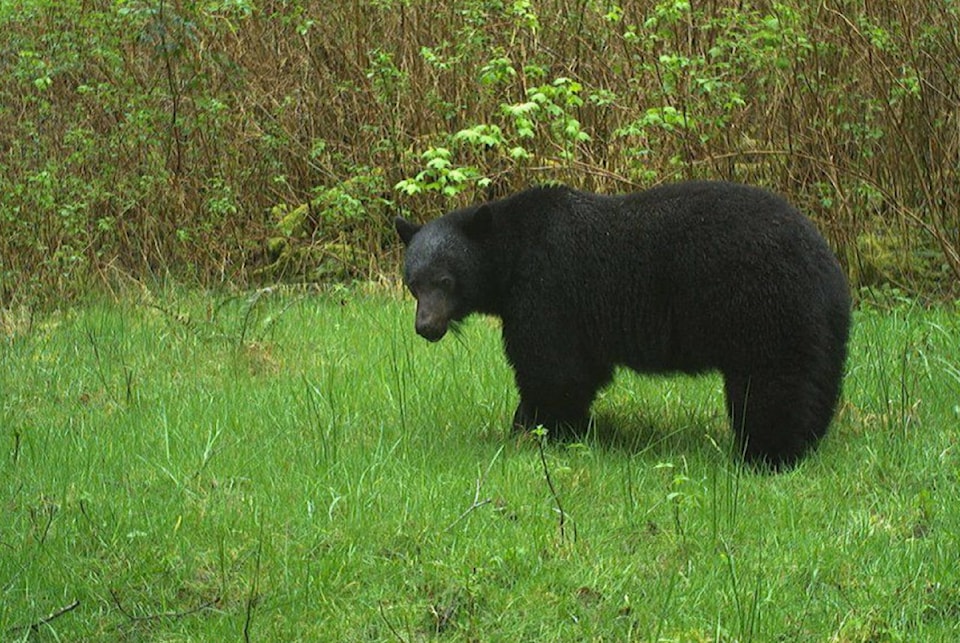Parks Canada is reminding drivers to slow down after a black bear was struck and killed by a vehicle on Aug. 10 in the Pacific Rim National Park Reserve on Vancouver Island.
The bear was hit on the Pacific Rim Highway 4, in the middle of the day, just north of the Tla-o-qui-aht First Nations community of Ty-Histanis.
“The driver of the vehicle involved is unknown,” said Todd Windle, Parks Canada human-wildlife coexistence team lead, in an email statement.
“There is no charge for accidentally striking wildlife with a vehicle. If, however, a driver was found to be speeding, driving recklessly, or intentionally harming wildlife, related charges could apply. In this case, as noted, the driver remains unidentified,” Windle continued.
Parks Canada is working together with Tla-o-qui-aht First Nation (TFN) to assist in cultural protocols and necropsy of the bear.
“We are looking to receive the hide for use in regalia and cultural items. We will also look to render bear grease if it will be possible,” said TFN Natural Resources Manager Saya Masso.
With respect to the necropsy, Parks Canada says these examinations help determine if an animal had underlying conditions, assess overall wildlife health, and support ongoing education and conservation work.
For this particular necropsy, Parks Canada has reached out to TFN to participate in the examination, if desired. Parks Canada says they will share any learning that results from the necropsy with Tla-o-qui-aht.
Windle confirmed that there are bear fatalities on Highway 4 almost every year.
“Obey speed limits and be aware of road conditions while visiting Pacific Rim National Park Reserve. Slowing down helps protect wildlife and others on the road,” said Windle.
The speed limit in the Pacific Rim National Park Reserve is 90 kilometres an hour and 60 kilometres an hour or less on secondary roads and active construction zones, as posted.
It’s been a deadly summer for bears on the west coast with B.C. conservation officers killing four food-conditioned black bears in the region to ensure public safety.



